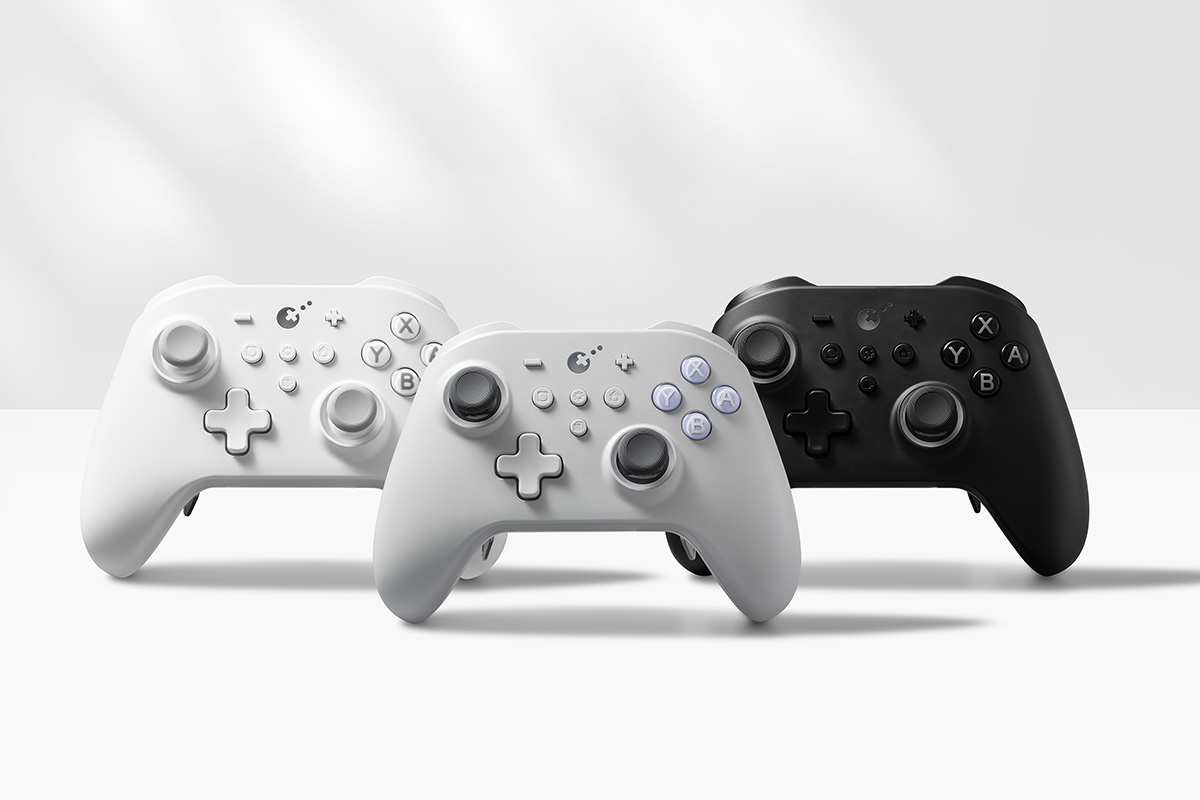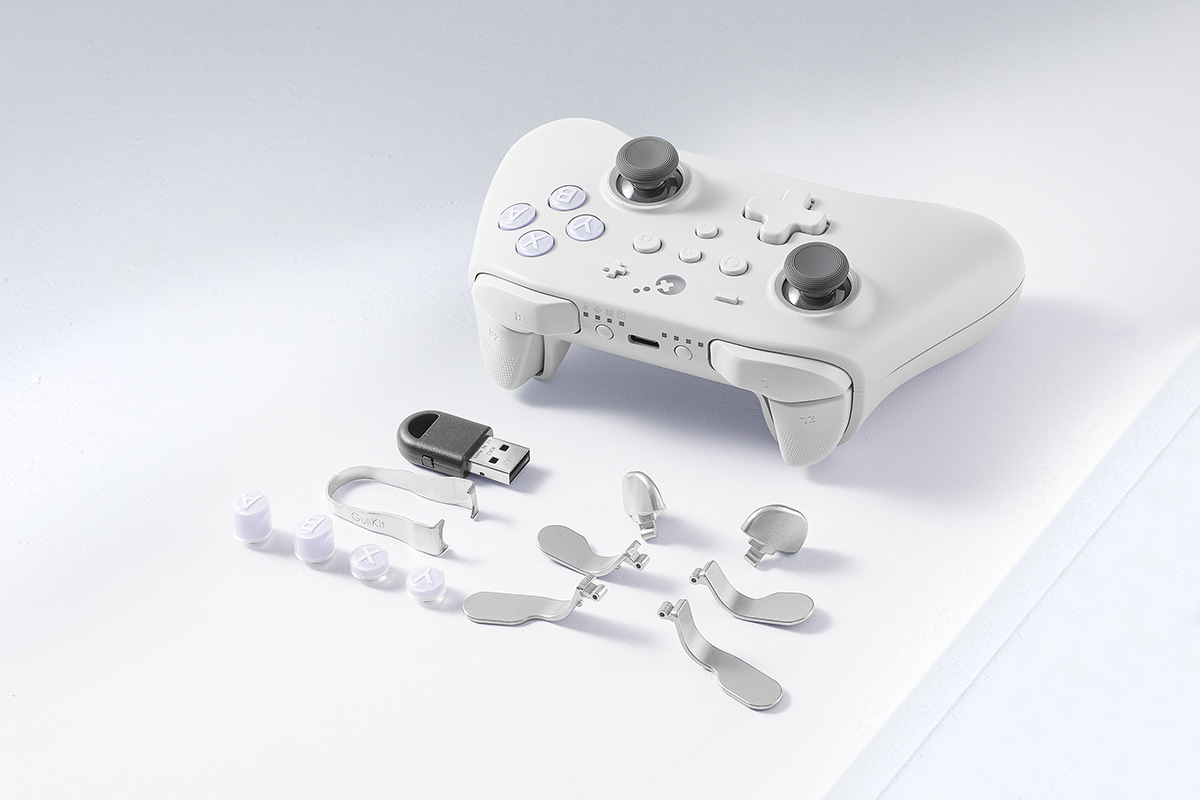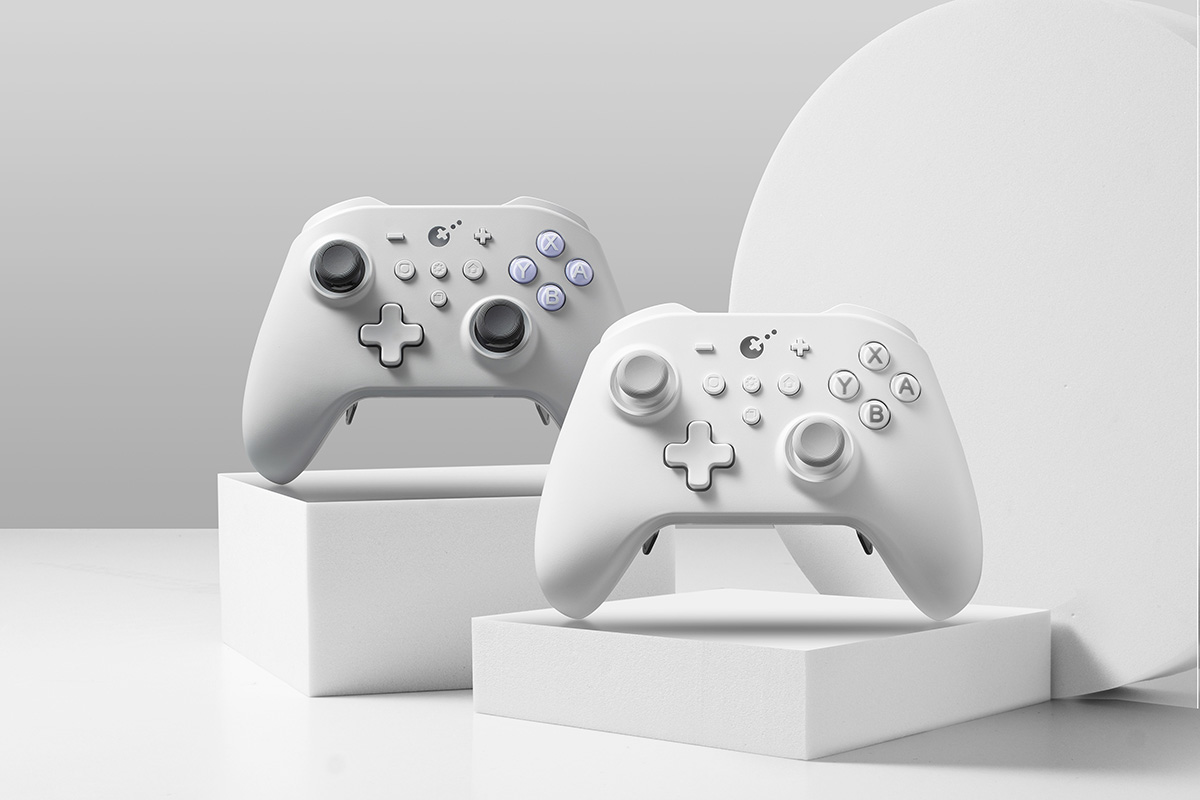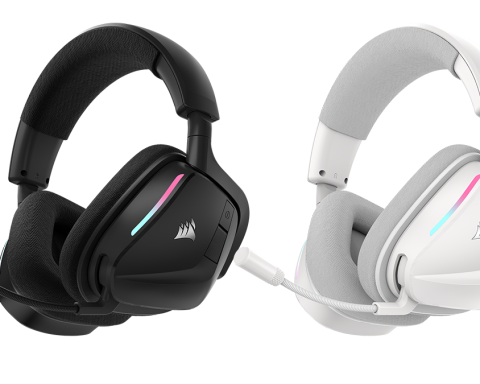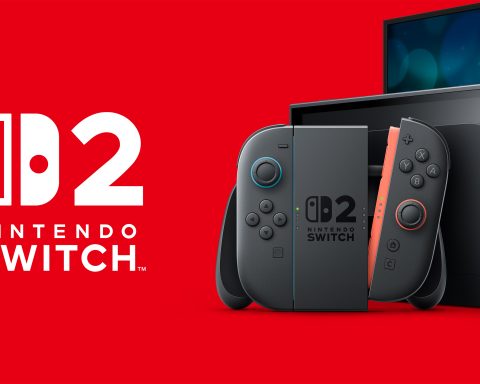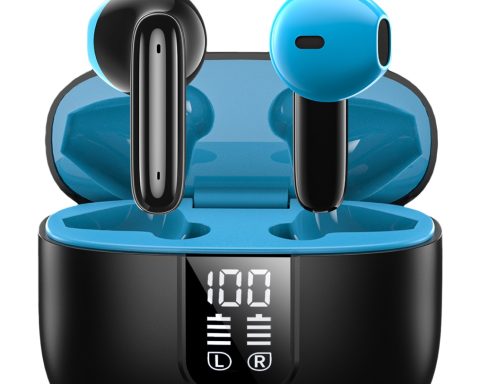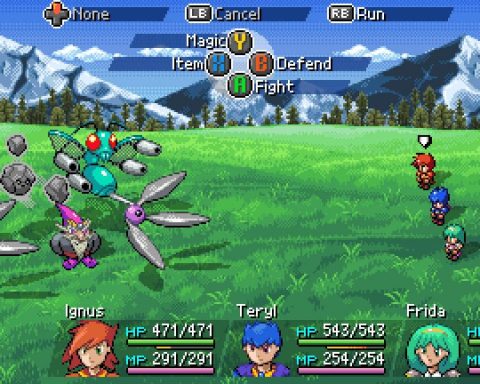Out of the box, the Gulikit KK3 Max feels like a much better controller than what you just paid for it. For a little over $100 AUD, you get a nice soft, silky feel across the surface, and it’s nicely weighted so that it fits comfortably in the hand. It might be a touch small for people with large hands, but for most, this controller promises a good time at a great price.
Inside that box is an impressive range of additional bits and pieces, too. ABXY buttons are swappable, so you can easily switch over to the Switch if that is your platform of choice. The buttons at the back are optional, too, which is great for people who aren’t into overly competitive games and find those triggers to be in the way more often than they’re useful. Of course, the downside to this is that if you do want these additional buttons, you’re going to need to install them yourself, but it’s pretty easy even for a beginner like myself to do.
There’s even a protective carry case in the box, which is genuinely impressive for this particular price point. Usually, the controllers that have that accessory in the box come at a much (much) higher price point).
Once you actually start using the device the positive impressions remain. The control sticks are comfortable with a smooth glide. Some might find the resistance to be ever so slightly on the side of “stiff,” but they were pretty much spot on for me. There is a notable lack of dead zones with those sticks too, which is always nice to see. The face buttons, meanwhile, are soft, but also placed very low on the surface of the controller, with very little travel for a press. Whether this is a good thing will be again down to personal preference, but as someone who likes very clicky buttons, I prefer soft buttons to be designed this way.
The L1 and R1 buttons also have a tiny travel distance to press. This, again, is excellent, particularly if you’re playing retro games, most of which were made for controllers that likewise had an efficiency in how they handled button presses.
Then there are all the additional features that really round out the product. There’s a 1000Hz Polling Rate available through the Hyperlink Adapter and a USB 3 port, which is great for people who are playing games that demand precision and responsiveness. There’s also standard Bluetooth for the more forgiving games, or for devices that the adapter isn’t compatible with. For motion gaming there’s a 6-Axis gyroscope, which is accurate enough to make emulated Wii games enjoyable with a bit of tuning. The manufacturer has a patent on an Aim Assist option, which is useless for me but I must assume would help some others with their gaming, and there’s a 950mAh battery built into the controller, which will allow most people to go a full week between needing to charge it.
You may have noticed that in all the positives up there I didn’t mention the L2/R2 “main” trigger buttons. The reason for this is simple – they zig when the rest of the controller zags. There’s a long way to travel when pressing down on those things, and it’s a fairly stiff journey the whole way. Because there’s no tactile indicator that you’ve hit the bottom, the temptation is to press down too hard because it feels like there should be further that it can go.
The only other negative is a minor thing, but will probably stop you from using this controller for more than one device: Swapping between devices absolutely sucks. You need to manually switch between PC/Android/Switch etc, and rather than do so with a mechanical switch as with most consoles, with this one you use the same button as the power button. You press it to turn it on, and then press it to cycle between each platform. The catch is that the button isn’t overly responsive, and if you hold it down for too long (waiting for it to cycle onto the next platform) the device will just turn itself off. It’s hardly the end of the world, but once I had this controller set up with my ROG Ally for GameCube/Wii and PS2 stuff I didn’t bother trying to use it for my Android devices or Switch.
And there you have it: A perfectly reasonably-priced controller with more features than you might expect, backed up with some excellent ergonomics and feel in the hand. It might not be the most exciting piece of hardware ever produced – indeed the aesthetics are very clinical and dry, but it’s not a device that you will regret purchasing on any level.
